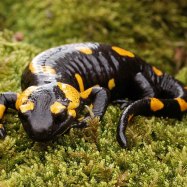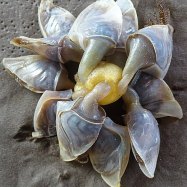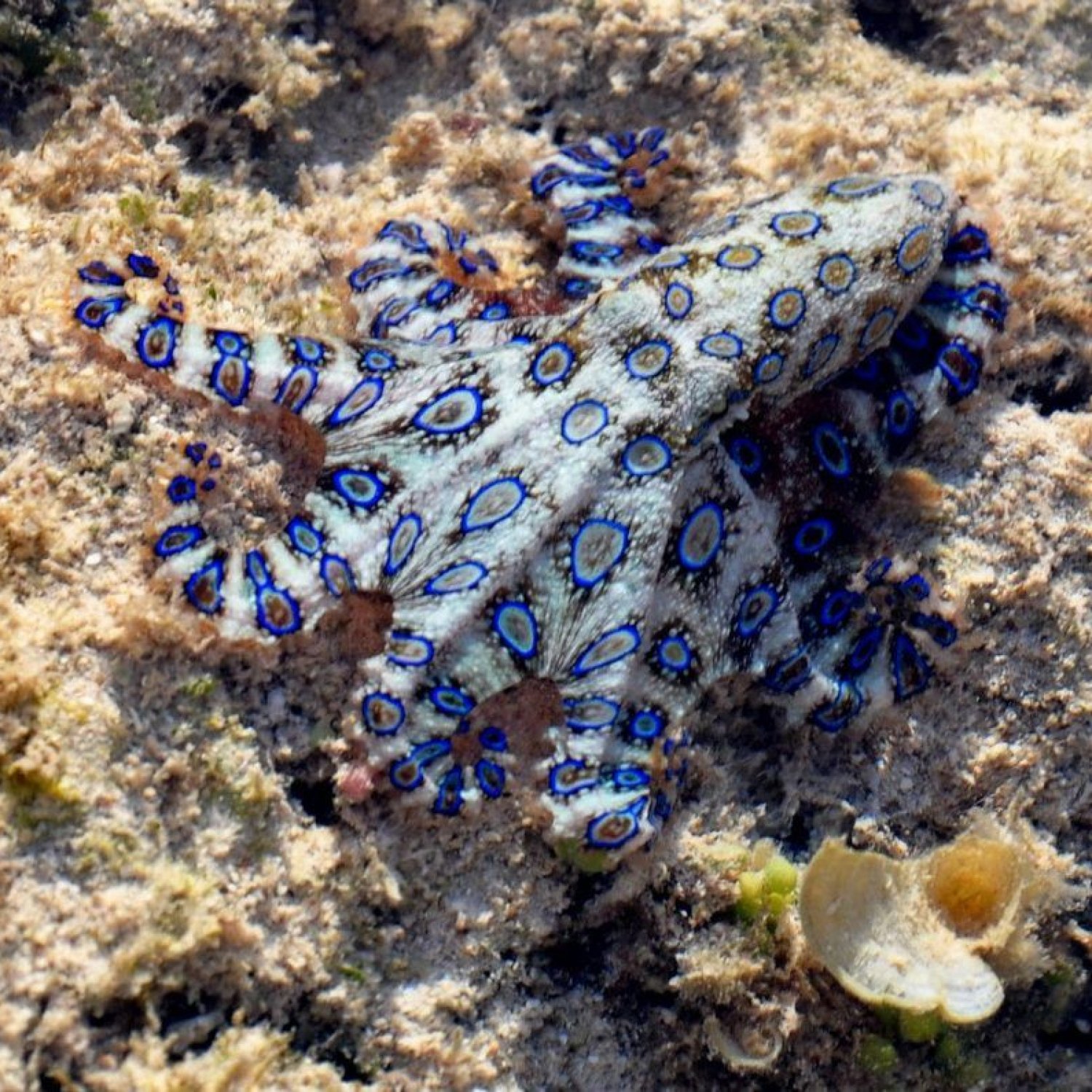
Blue Ringed Octopus
5 to 8 inches
The Blue Ringed Octopus is a fascinating sea creature found in intertidal and shallow coastal waters. With a small and round body shape and eight arms, they can grow up to 5 to 8 inches in length. Belonging to the Octopodidae family, these intelligent and venomous animals are a favorite among divers and marine enthusiasts alike. Learn more about this unique animal and its habits in the ocean. #BlueRingedOctopus #Octopodidae #marineanimals
Animal Details Summary:
Common Name: Blue Ringed Octopus
Kingdom: Animalia
Habitat: Coral reefs and rocky shores
The Elusive and Deadly Blue Ringed Octopus: A Master of Camouflage and Carnivorous Prowess
Deep in the depths of the Indo-Pacific region, hiding among the vibrant and bustling coral reefs and rocky shores, lurks a creature of myth and intrigue – the Blue Ringed Octopus. With its striking blue rings and small, round body, this animal may appear harmless and even beautiful. However, do not be deceived by its outward appearance. The Blue Ringed Octopus is a highly venomous and elusive creature, known for its unique tactics and deadly abilities Blue Ringed Octopus.The Evolution and Taxonomy of the Blue Ringed Octopus
Scientifically known as Hapalochlaena, the Blue Ringed Octopus belongs to the kingdom Animalia, the phylum Mollusca, and the class Cephalopoda. Within the order Octopoda, it is a member of the family Octopodidae, which includes other octopus species such as the common octopus and the giant Pacific octopus. This family is known for its intelligence, adaptability, and advanced hunting techniques.The Blue Ringed Octopus has undergone several adaptations over the years to become the expert predator it is today. Its ability to change color and texture to blend in with its surroundings, as well as its ability to manipulate its body and arms to slip into small crevices and gaps, make it a truly remarkable creature.
Habitat and Geographical Distribution
The Blue Ringed Octopus is primarily found in the warm waters of the Indo-Pacific region, including Australia, Japan, and Indonesia. Within these regions, they can be found living in intertidal and shallow coastal waters, making their homes among the crevices and gaps of coral reefs and rocky shores.Due to their small size and expert camouflage abilities, Blue Ringed Octopuses can easily go unnoticed, making it difficult for scientists to determine their exact population size. However, their presence has been documented in several countries in the region, indicating that they are relatively widespread Beago.
The Art of Camouflage and Hunting
One of the most fascinating traits of the Blue Ringed Octopus is its ability to change color and texture to blend into its environment effectively. Using specialized cells called chromatophores, the octopus can expand or contract its pigments, allowing it to mimic its surroundings perfectly. This amazing camouflage not only helps the octopus hide from predators but also aids in its hunting techniques.The Blue Ringed Octopus is a carnivorous creature, and its diet primarily consists of small crustaceans and fish. Using its eight arms, it can swiftly capture its prey with ease. Its clever camouflage also allows it to ambush unsuspecting prey, giving it a higher success rate in hunting.
The Venom and Intriguing Behavior of the Blue Ringed Octopus
Despite its small size of 5 to 8 inches in length, the Blue Ringed Octopus is considered one of the most dangerous creatures in the ocean. Its venom is known to contain tetrodotoxin, a powerful neurotoxin that can paralyze its prey and even kill a human. This toxin is 1,200 times more potent than cyanide, and the octopus has enough of it to kill 26 adult humans.However, the Blue Ringed Octopus does not use its venom for hunting. Instead, it uses a unique tactic called "tetrodotoxin baiting" to deceive its prey. The octopus will use its blue rings to flash a neon-blue glow, luring its prey towards it. Once the prey gets close enough, the octopus will pounce, using its venomous beak to deliver a lethal bite.
This use of tetrodotoxin is also observed in the octopus' defense mechanism. When threatened, it will show off its blue rings and contort its body to resemble a ball, displaying its venomous beak as a warning to any potential predators.
The Future of the Blue Ringed Octopus
As with many creatures in the ocean, the Blue Ringed Octopus is facing threats to its survival. Pollution, habitat destruction, and overfishing all pose a danger to this species. The octopus is also sometimes caught as bycatch in fishing nets.Efforts are being made to conserve this magnificent creature, including protecting its habitats and raising awareness about the importance of preserving marine life. Further research and monitoring of populations are also necessary to understand and protect this elusive and fascinating creature.
In the wild, the Blue Ringed Octopus remains a mysterious and elusive creature, captivating the minds of many. With its stunning beauty, masterful camouflage, deadly venom, and intriguing behavior, it will continue to fascinate and inspire awe in all who encounter it.

Blue Ringed Octopus
Animal Details Blue Ringed Octopus - Scientific Name: Hapalochlaena
- Category: Animals B
- Scientific Name: Hapalochlaena
- Common Name: Blue Ringed Octopus
- Kingdom: Animalia
- Phylum: Mollusca
- Class: Cephalopoda
- Order: Octopoda
- Family: Octopodidae
- Habitat: Coral reefs and rocky shores
- Feeding Method: Carnivorous
- Geographical Distribution: Indo-Pacific region
- Country of Origin: Australia
- Location: Found in intertidal and shallow coastal waters
- Animal Coloration: Pale yellow or orange with bright blue rings
- Body Shape: Small and round with eight arms
- Length: 5 to 8 inches
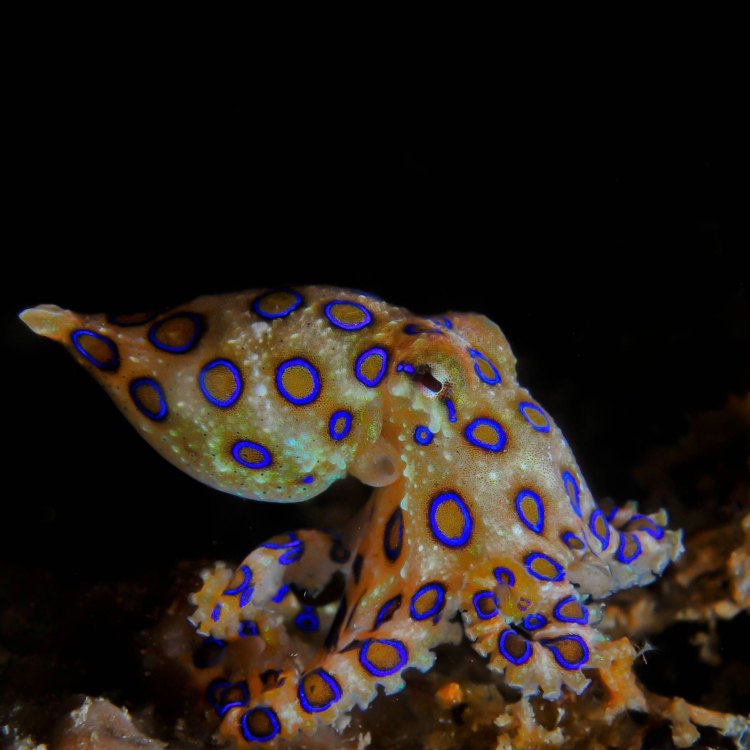
Blue Ringed Octopus
- Adult Size: 5 to 8 inches
- Average Lifespan: 1 to 2 years
- Reproduction: Sexual
- Reproductive Behavior: Males use a specialized arm to insert a packet of sperm into the female
- Sound or Call: No known sound or call
- Migration Pattern: Non-migratory
- Social Groups: Solitary
- Behavior: Generally shy and docile, but can deliver a highly venomous bite if threatened
- Threats: Habitat loss, pollution, and overfishing
- Conservation Status: Not evaluated (NE)
- Impact on Ecosystem: Predator of small crustaceans and mollusks, helping to maintain balance in the ecosystem
- Human Use: None
- Distinctive Features: Bright blue rings on the body
- Interesting Facts: 1. Blue Ringed Octopuses are highly venomous and their bite can be fatal to humans. 2. They are known for their stunning display of bright blue rings when threatened. 3. They have the ability to change their body color and texture to blend with their surroundings. 4. The venom of the Blue Ringed Octopus contains tetrodotoxin, a powerful neurotoxin. 5. They are active hunters that use their powerful beak to bite and inject venom into their prey.
- Predator: Sharks, larger fish, and sea snakes
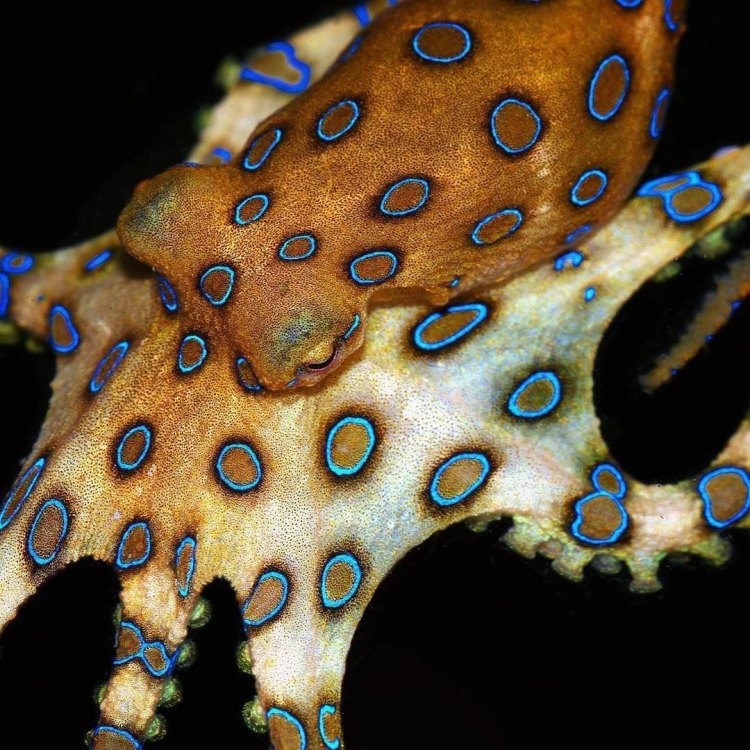
Hapalochlaena
The Mysterious Blue Ringed Octopus: An Elusive Beauty of the Sea
Deep within the vastness of the ocean, there lies a creature shrouded in mystery and beauty. Meet the Blue Ringed Octopus, a species of octopus renowned for its vibrant blue rings and deadly venom. These fascinating creatures have captured the hearts and minds of marine enthusiasts and researchers alike, but there is still so much we do not know about them. In this article, we will delve into the intriguing world of the Blue Ringed Octopus and uncover its unique features, behavior, and impact on the ecosystem PeaceOfAnimals.Com.The Blue Ringed Octopus (Hapalochlaena sp.) is a small-sized octopus, with an adult size ranging from 5 to 8 inches. It has a round body, with eight arms lined with suction cups. They belong to the genus Hapalochlaena, which consists of four recognized species: H. lunulata, H. maculosa, H. fasciata, and H. nierstraszi. These tiny creatures have a relatively short lifespan, with an average of 1 to 2 years, but their lives are far from ordinary Boomslang.
One of the most interesting aspects of the Blue Ringed Octopus is its reproductive behavior. They reproduce sexually, with mating typically occurring during the summer months. Males have a specialized arm, called a hectocotylus, which they use to insert a packet of sperm into the female. Once fertilized, the female lays a clutch of around 50 eggs and tirelessly guards them until they hatch. The female sacrifices her life to protect her eggs, never leaving their side, even to feed.
The Blue Ringed Octopus may not be known for its vocal abilities, but it has another unique feature that sets it apart from other marine creatures – its coloration. The blue rings on their body serve as a warning sign to potential predators. These bright blue rings only appear when the octopus feels threatened, making them an essential defense mechanism for the species. When feeling threatened, the Blue Ringed Octopus displays an awe-inspiring sight with its pulsing blue rings, serving as a clear warning to stay away.
Aside from its notable defense mechanism, the Blue Ringed Octopus also has the ability to change its body color and texture to blend with its surroundings. This is known as mimicry, and it allows the octopus to hide from predators and prey in plain sight. They can change their color from shades of brown to bright yellow and even white, depending on the environment they find themselves in. This unique ability adds to their mystique and makes them even harder to spot in their natural habitat.
The Blue Ringed Octopus may be small, but it is an active hunter, preying on small crustaceans and mollusks. It uses its powerful beak to bite its prey and inject them with venom, immobilizing them instantly. The venom of the Blue Ringed Octopus contains tetrodotoxin, a potent neurotoxin that paralyzes the target's nervous system, leading to respiratory failure and death. This makes the Blue Ringed Octopus one of the most venomous creatures in the ocean.
The Blue Ringed Octopus is a solitary creature, preferring to live and hunt alone. They are generally shy and docile, but if provoked or threatened, they can deliver a highly venomous bite. The bite of the Blue Ringed Octopus may be small, but it can be fatal to humans if left untreated. The toxin has no known antidote, and the only treatment is artificial respiration until the effects of the venom wear off.
Aside from their predators, the Blue Ringed Octopus faces several threats in its natural habitat. Like many marine species, habitat loss, pollution, and overfishing are significant concerns for the species' survival. These factors can disrupt the fragile balance of the ecosystem, affecting not only the Blue Ringed Octopus but the entire marine food chain.
Despite their impressive defense mechanism and venomous bite, the Blue Ringed Octopus is relatively harmless to humans. This is because they are not aggressive creatures and will only use their venom as a last resort when feeling threatened. Therefore, they do not pose any direct danger to humans, and there have been no reported incidents of deaths caused by a Blue Ringed Octopus in the wild.
However, their impact on the ecosystem should not be underestimated. As active hunters, they play an essential role in maintaining the balance in the ocean's food chain. They are natural predators of small crustaceans and mollusks, helping to keep their population in check and preventing overpopulation, which can have detrimental effects on the ecosystem.
Human use of the Blue Ringed Octopus is virtually non-existent due to its venomous nature. However, there have been reports of them being kept as pets in home aquariums, which is strongly discouraged due to their predatory nature. These creatures are meant to thrive in the vast and complex ocean, not in a confined space. Therefore, it is essential to leave them in their natural habitat and appreciate them from a safe distance.
In terms of conservation status, the Blue Ringed Octopus has been classified as Not Evaluated (NE) by the International Union for Conservation of Nature (IUCN). This means that there is not enough data available to evaluate their population size and threat level accurately. However, as with most marine species, it is crucial to protect their habitats and reduce the factors that threaten their survival.
In conclusion, the Blue Ringed Octopus is a mysterious and captivating creature that inhabits the depths of our oceans. From its stunning display of bright blue rings to its powerful venom, this elusive species has fascinated researchers and marine enthusiasts for decades. But there is still much we do not know about this tiny octopus, and more research is needed to unravel its secrets fully. As we continue to learn more about this creature's unique features and behavior, we must also work towards preserving its natural habitat and ensuring its survival for generations to come. After all, the ocean would not be the same without the mysterious and elusive Blue Ringed Octopus.
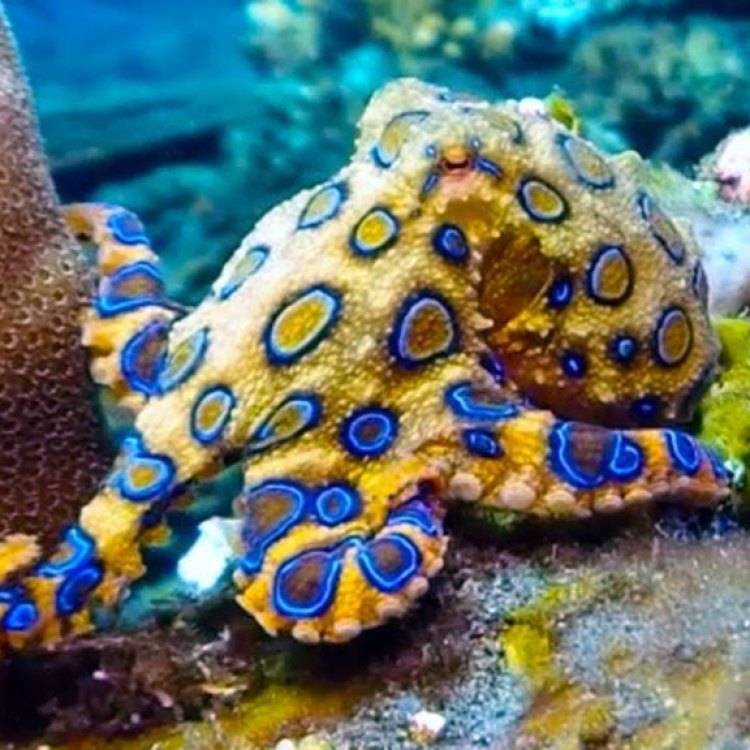
The Elusive and Deadly Blue Ringed Octopus: A Master of Camouflage and Carnivorous Prowess
Disclaimer: The content provided is for informational purposes only. We cannot guarantee the accuracy of the information on this page 100%. All information provided here may change without prior notice.

